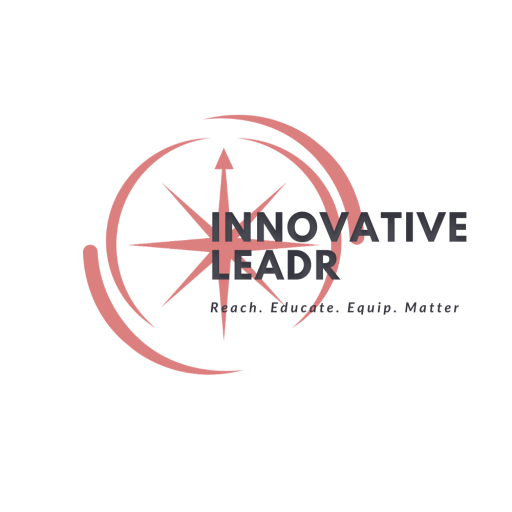
Apr 25, 2019 | Leadership, MTSS & RtI
MTSS Framework – How Schools Support Students Through Problem Solving – Educators, Teachers, Schools
The MTSS framework is a series of evidence-based practices implemented across a system of learning to meet the varying needs of all students. Broader than a problem-solving process alone, it establishes a foundation of support focused on professional development, leadership, and empowering teachers to effectively assess and instruct. The MTSS process also consists of four essential problem-solving steps, which include:

1. Defining the problem—The first step of MTSS involves determining the areas in which core instruction needs to be adjusted to meet the needs of at least 80% of the population. After core is analyzed and strengthened, PLCs (professional learning communities) should identify which students have gaps beyond what is being addressed in core instruction. PLCs involved should determine what gaps exist and the services in which they have resources to provide. It’s important early on to address any issues involving poor attendance, behavior, or other health barriers.
2. Analyzing the data—MTSS is driven by data, so after defining the problem, data should be reviewed to solidify the cause. This cause could be a gap in certain domains of learning or a specific skill deficit. All relevant information and data should be gathered to determine any barriers that could inhibit progress towards the goal.
3. Implementing an intervention plan—After identifying the issue and analyzing all relevant data, an intervention plan appropriate for the student’s unique needs should be designed and implemented. These interventions should be evidence-based and implemented to fidelity.
4. Evaluating the intervention—It is critical that educators spend time with the intervention effectiveness evaluation. Educators should consider whether the intervention was successful and if the student responded effectively to the strategic or intensive instruction. If data showcases adequate progress of the group (tier 2) or individual (tier 3), the intervention can continue, but if the data does not indicate success, the PLC should carefully problem solve why desired results were not achieved.
This is a cyclical process that continues over a period of time until educators have created a system of support that positively impacts the students’ level of needs.

Mar 25, 2019 | Leadership, MTSS & RtI
MTSS Professional Development – The MTSS Process and Decision Making for Educators, Teachers, Schools
At i-LEADR, Inc., we often receive questions from teachers and district administrators about our MTSS professional development and what the process involves. Here are some of the questions we get asked most frequently and their answers.

Does MTSS have an impact on all students?
An essential component of every MTSS framework involves a universal screening of all students. One aspect of an effective MTSS framework is a core curriculum where every student receives high-quality, differentiated core instruction backed by evidence and engaging instructional strategies. As a result, a student’s need for intensive intervention or a special education evaluation is ideally not related to poor classroom instruction. In a properly implemented system, the strong differentiated core would provide students who are not struggling with extension opportunities to take their learning deeper. Students who need catch-up support also have access to differentiated core as well as appropriately designed intervention systems. In a recent meta-analysis study, John Hattie found that Response to Instruction has an effect rate of 1.29. “Hattie found that the average effect size of all the interventions he studied was 0.40. Therefore, he decided to judge the success of influences relative to this ‘hinge point’, in order to find an answer to the question ‘What works best in education?’”
What does a universal screening involve?
A universal screening should be a brief assessment that provides valid, reliable, and accurate results for determining which students may develop behavioral or learning problems. All students are screened to determine who is at risk of academic problems, so intervention strategies can be identified and enacted as early as possible.
How do teachers monitor student progress?
Progress monitoring is an important aspect of any RTI decision making process, as it measures the performance of all students, both in general and special education classrooms. The methods used must present reliable strategies for helping teachers cater their instruction to be more effective, and they should be enacted at least every month, or more frequently depending on the student need. Regular progress monitoring can also help educators identify students not exhibiting adequate progress, compare the effectiveness of different instruction forms, and design more individualized instruction forms.

Feb 25, 2019 | Leadership, MTSS & RtI
MTSS Framework for Educators, Teachers, School Districts – Common Misconceptions
As an educator or parent, you may have heard the trending buzzword in education, MTSS (Mult-tiered System of Support). While you may have some basic knowledge about what it is, you may not fully grasp its purpose. In its simplest form, an MTSS framework helps teachers, schools, and districts identify struggling students, so they can implement strong core instruction and an early intervention program. Despite its importance, many misconceptions still exist about the MTSS process today, including the following:
1. MTSS is a curriculum or program—The MTSS framework is a total school improvement process. It is not a curriculum that teachers adopt and follow in their classroom. Rather, it is a proactive process that involves several elements, such as screening students early on in the school year, using evidence-based strategies during core instruction and interventions, providing staff with professional development, involving families in student-level problem solving and more.

2. MTSS and special education are separate—The inclusive MTSS framework and special education programs are separate supports that feed into one another. All students who qualify for special education are still served a majority of the day in the general education classroom, where they also receive layered MTSS supports. Rate of progress is determined after students receive appropriate levels of support, including differentiated core instruction and strategic (tier 2) and intensive (tier 3) interventions. If implemented to fidelity and a student is still exhibiting academic or behavior gaps, the team may decide to pursue a Special Education evaluation. If the student is found eligible by the IEP team, data collected from the MTSS process is essential to determine student academic and behavioral goals and objectives while developing an IEP.
3. All students are placed into interventions—The MTSS framework uses three tiers (Tier 1, Tier 2, and Tier 3), and every student is involved. More specifically, teachers use methods to teach their students that are backed by research, and every student undergoes screening to determine who is responding to these evidence-based strategies and who is not. At the earliest point, students may be divided into small groups to account for varying areas of need and strengths.

Nov 29, 2016 | Data, MTSS & RtI
Teachers and Educators – How to reach ALL of the students in a classroom
5 Key Components to Ensure Success:
People become teachers because they have a passion for helping children learn and be successful. It is so disheartening to be a teacher and feel as though you have failed a child. Never again will failing a child be an option. Below are 5 key components of initial implementation that will help ensure that you are set up for success to reach all children in your class/grade/school/district.
1. Systematic process for implementing RtI/MTSS district or school-wide
Systematic is the key here! If there is no consistency in screenings and/or assessments used, there is no valid way to measure effectiveness of your implementation
Systematic universal screener(s)
- Systematic universal assessment(s)
- Systematic method for meeting and analyzing data in PLCs
- Systematic process for developing Tier 1: Differentiated Core Instruction Plans
- Systematic plan for reviewing the grade level data to revise/update the plan created as needed.
2. Universal Screening & Universal Assessment Data
It is imperative to have universal data to analyze. Because you can’t always rely on just one data point, it is most effective to have a triangulation of data (at least 3 data points).
- Universal Screener(s) (skill specific screener(s) – fluency, comprehension, vocabulary, etc.)
- Universal Assessment (grade level content/standards-based assessment(s) – baseline assessment, benchmark assessment, prior year End of Grade/Course assessment, etc.)
PLCs strategically meet to analyze data, problem-solve as a PLC, make data-based decisions, and create an effective Tier 1: Differentiated Core Instruction Plan based on that data analyzed.
3. Identify students who are at-risk
Identify all students who did not meet the target/cut scores on the screener(s)/assessment(s) identified by the grade/school/district.
- Students who have at least 2 out of 3 risk indicators based on the target or cut scores from the universal screener(s) and/or universal assessment(s) should automatically be flagged by the team as being Tier 1 at-risk.
- Students who have 3 out of 3 risk indicators – are your most at-risk students and should begin intervention immediately – unless your data states that it is a core instruction issue.
Early Warning Systems: If you are lucky enough to have access to an early warning system – such as the one offered in RtI: Stored! – you will be able to also analyze the following data:
- Absentee Data
- Classroom Grades
- Office Discipline Referral Data (ODRs)
4. Digging Deeper into Diagnostic Data:
If a student’s universal screening data indicates that the student is below or well below grade level, then it is time to dig deeper to identify the student’s foundation specific skill deficit area(s)
5. Creating groups for intervention/enrichment blocks:
Using all of the data, the PLC team can begin creating intervention groups and enrichment groups.
- Teachers should be assigned to instruct the groups based on their strengths. This too should be based on data!
These 5 steps will allow you to truly see each and every student. Once you truly see them and identify their possible risk indicators, as well as gap areas, based on their data, then you have the ability to actually reach all of them. Because it is not an option to fail any child – and – Because all means all!







